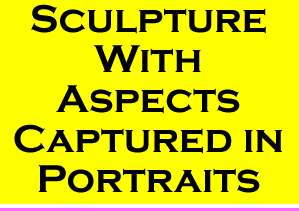At the Upper View Gallery are the results of an unusual collaboration between a sculptor and a photographer. The sculptor, Wilfredo Morel, says that his overriding subject is life, in particular life with all of its vicissitudes. This is evidently also the view of the photographer John Henry, whose subject, at least for purposes of this exhibition, is Mr. Morel's work.
The exhibition is titled ''Steele Family Album.'' Mr. Morel's pieces are made of steel, scrap metal actually, which has been discarded in the Hudson Valley area. (The extra ''e'' on steel presumably gives the word some swank.) The notion of a family album arose when Mr. Henry began to take pictures of selected aspects of the sculpture. The results often have the look of portraits.
Family has a wider meaning here. The partnership that has been forged by the two men is an ad hoc one. They met at a meeting of an association of Hudson Valley artists. That enough practicing artists live in the area to warrant such an association indicates a widespread communal feeling. But in the immediate bond between the two, Mr. Morel furnished Mr. Henry with engaging subject matter, while Mr. Henry provided something less tangible perhaps, the chance to see his work as another sees it.
The sculptures date mostly from this year, although the first one encountered inside the gallery is one in the window that was made in 1997. It is titled ''Mirror Image,'' and it is easily read as a life-size skinny figure looking at itself in a hand-held mirror. The viewer, Mr. Morel said in a gallery interview, is meant to see that while the figure gazes into an empty rectangle, he is also empty inside. Part of its chest has been peeled away to show this void. Calling attention to the feet of the figure, Mr. Morel says they are dissimilar as a symbol of humanity's imperfection. The bases that support a Morel piece also have meaning: here a metal square is turned up a bit at one corner, showing imperfection.
